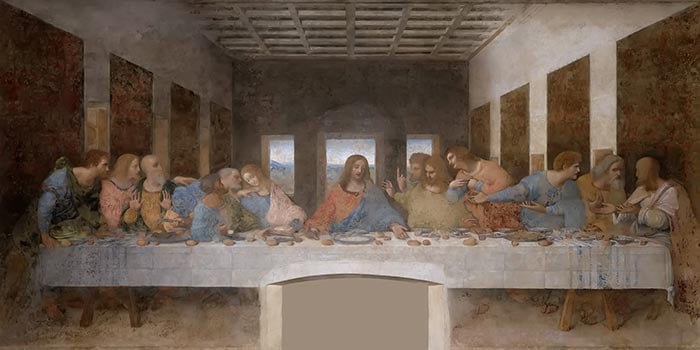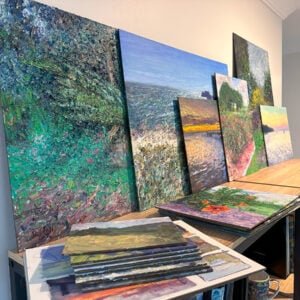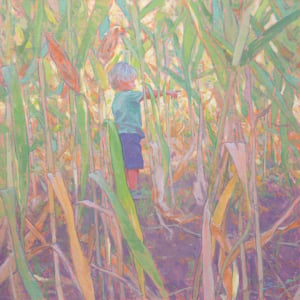Fresco is a form of mural painting used to produce grand and often beautiful works on plaster. One of the most famous examples is the Sistine Chapel ceiling by Michelangelo.

The word “fresco” means “fresh” in Italian, referring to the damp lime plaster which frescos are typically painted on. Unlike conventional paint over dry plaster, the pigment becomes part of the wall and cannot easily flake away.
Lime plaster is responsive to movement and changes in the surrounding environment, making for durable works of art.
The nature of the plaster also affects the appearance of the painting. Some frescos feature a glimmering effect from aggregates in the plaster, such as river sand, marble dust, and volcanic ash.
Different Types of Fresco
There are three main types of fresco: buon, secco, and mezzo.
The classic approach is the buon or “true” fresco, which involves painting onto freshly mixed and applied plaster. The wet plaster acts as the binding medium, so only water and pigment are needed.
Michelangelo used buon fresco for the ceiling of the Sistine Chapel.

The challenge with buon fresco is that artists only have a few hours to paint before the plaster dries. That is where the other fresco types come into play.
A secco or “dry” fresco is painted onto dry plaster. Without wet plaster as a binding medium, some other medium is needed to bind the pigment, such as egg yolk, oil or glue. While buon frescos usually have a smooth surface, Secco frescos typically use rough plaster to help with binding.
Secco is also often used to touch up detail on other types of fresco. It was also used to add colors that were not yet available using buon techniques, such as blue.
In between these two is the mezzo or “medium” fresco. For this, the paint is made with limewater and applied to plaster that is almost dry. The limewater creates a bond between the pigment and the plaster. This technique extends painting times and makes it easier to cover large areas.
Examples of Frescos
One of the earliest examples of fresco is Investiture of Zimri-Lim, from the Royal Palace of the ancient city-state of Mari in eastern Syria. It survived the destruction of the palace and remains a tribute to the toughness of well-made fresco.

Frescos were popular in ancient Greece and Rome, decorating villas, palaces, and temples. Several were preserved in the eruption at Pompeii and have since been unearthed.


Leonardo da Vinci’s The Last Supper is one of the most famous secco frescos. Leonardo added a white lead undercoat over the first two layers of plaster to lighten tones in the painting. The secco approach allowed him more time to complete the fresco, but it unfortunately contributed to the gradual deterioration of the painting. It has had to be repeatedly restored and it is presently just a shell of its former self.

Below is the remarkably intricate The School of Athens by Raphael. It depicts an assembly of some of the greatest minds at the time from many different areas (mathematicians, scientists, and philosophers such as Plato and Aristotle).

Frescos saw a major revival in the 20th century thanks in part to the Mexican mural movement and artists such as Diego Rivera (refer to his Detroit Industry Murals created for the Ford Motor Company).
Want to Learn More?
You might be interested in my Painting Academy course. I’ll walk you through the time-tested fundamentals of painting. It’s perfect for absolute beginner to intermediate painters.
Thanks for Reading!
I appreciate you taking the time to read this post and I hope you found it helpful. Feel free to share it with friends.
Happy painting!
Dan Scott

Draw Paint Academy







Gentlemen
Firstly I thank you for the knowledge of Fresco in Europe. However, do you know anything about the Fresco in Asia, especially in Southeast Asia or Vietnam?
Highly appreciated for your consideration. I’m just an international tour guide, free-lancer. I love the Buddhist temples, their layout inside out.
Best regards.
In addition to the original frescos in Egyptian tombs, and later I’m Mayan tombs.